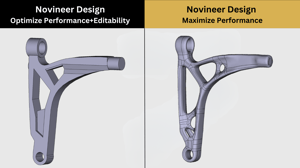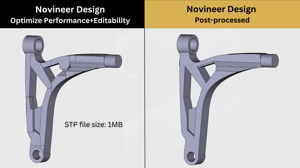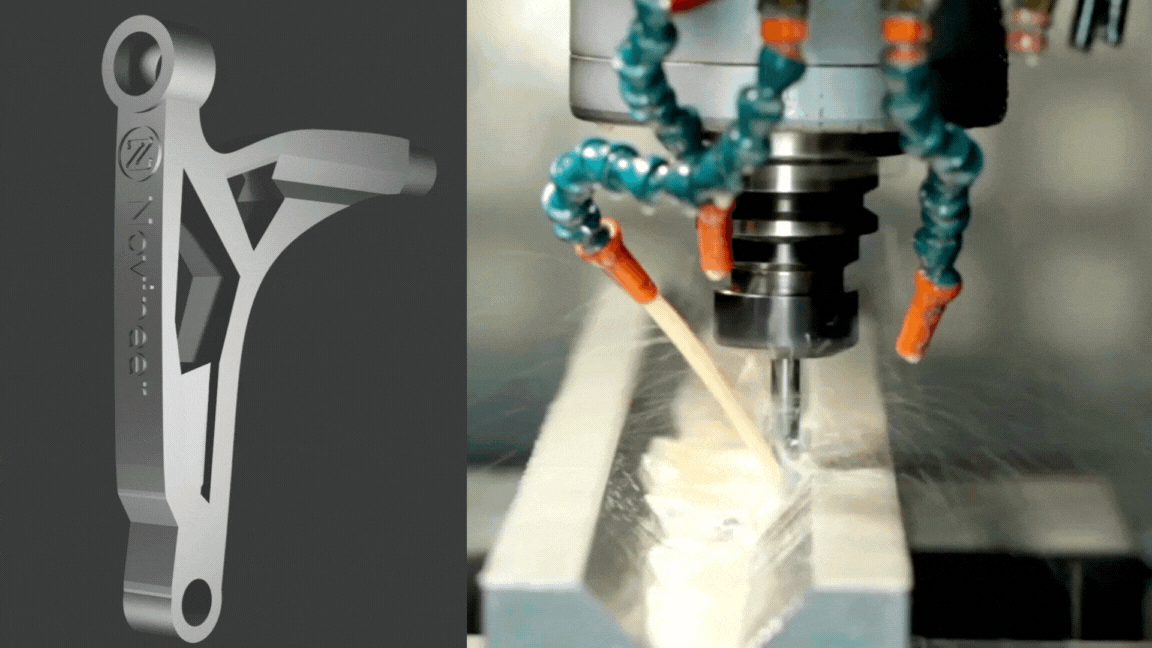Balancing Performance with Editability
Topology optimization optimized designs are difficult to edit. Novineer's approach uses discrete polygon geometries, offering enhanced editability and a balance between performance and future design flexibility.

Challenges in Current Topology Optimization Practices

Generative design and topology optimization techniques are capable of tailoring the material distribution to optimize the part performance while subjected to constraints such as weight, performance specifications, and manufacturability. Despite the advent of topology optimization software over two decades ago, a survey of over 200 product engineers reveals its limited application to end-use parts. A challenge identified is the lack of editability in generated designs. These designs, while optimized, seldom meet all engineering and production requirements without significant post-processing. This involves modifications such as part additions, assembly integration, or manufacturing preparation. Current software frameworks typically output designs in ".stl" format, which is unsuitable for CAD operations due to its reliance on artificial density or local geometric properties. Converting these designs into editable formats like ".stp" or ".igs" using NURBS surfaces or T-Splines results in heavier files with complex boundary representation, making subsequent CAD operations such as Boolean functions, fusions, and cuts exceedingly time-consuming.
Novineer's Design Approach Using Discrete Polygon Geometries
Novineer introduces an innovative approach by utilizing discrete polygon geometries throughout the design process. This method involves iteratively altering the shape, size, location, and orientation of multiple design pieces through their endpoints. A key aspect of this process ensures uninterrupted load paths from the point of application to support structures, while also minimizing significant piece overlap at stress-prone areas. The output is an independent, explicit geometry that offers greater editability. However, this method's challenge lies in the potential for stress concentrations due to the discontinuity of the geometry. To address this, Novineer’s final design stage involves evaluating discrete geometries and suggesting configurations that merge optimized pieces into several groups to alleviate stress concentration. This modular approach not only enhances stress management but also allows for user-directed modifications, fostering smoother boundary transitions between components.

Balancing Performance with Editability in Customizable Designs

Novineer empowers users to tailor their design focus with options for maximized performance or a balanced approach emphasizing both optimized performance and editability. The maximized performance setting exploits local geometries to create performance-driven, organic-looking structures. Alternatively, the optimized performance plus editability setting employs discrete geometries, ideal for projects requiring future modifications or high customization levels. This dual-option framework allows users to evaluate and compare both approaches, providing insights into how different priorities affect the final design. Such comparisons elucidate the trade-offs between enhancing performance metrics and achieving a design that offers greater flexibility for future adjustments. Novineer’s editable design not only simplifies CAD operations but also improves the machining process with its straight edges and surfaces.

